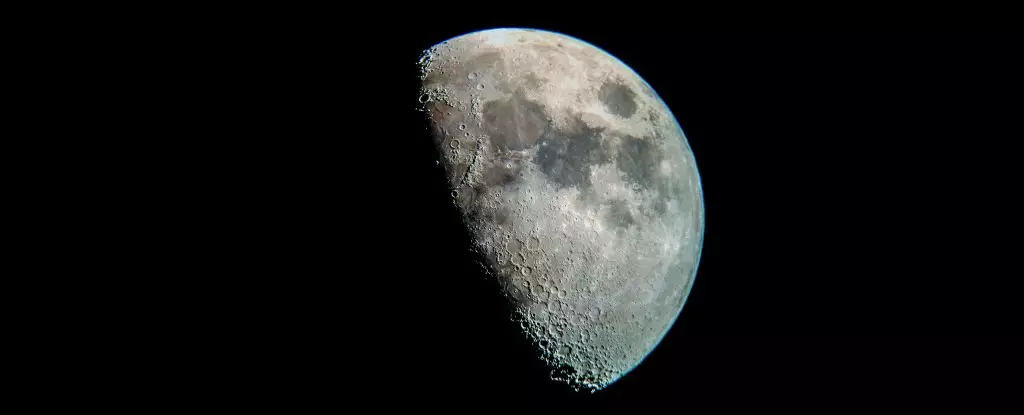The origins of the Moon, Earth’s enigmatic companion, have long intrigued scientists and laypeople alike. Recent research conducted by an international team of geologists suggests a much earlier formation date for the Moon than previously estimated. According to this new timeline, the Moon may have formed as early as 4.53 billion years ago, which has significant implications not only for our understanding of the Moon itself but also for Earth’s history and evolutionary narrative.
A Radical Shift in the Timeline
Traditionally, scientists have pegged the Moon’s formation at about 4.35 billion years ago, following a cataclysmic collision between a Mars-sized body and a molten Earth. This updated analysis challenges long-held beliefs and posits that the lunar formation occurred hundreds of millions of years earlier. Researchers, led by geologist Francis Nimmo from the University of California, Santa Cruz, argue that this substantial adjustment may illuminate previously perplexing characteristics of the Moon, such as its scarcity of massive impact basins and its metallic composition relative to Earth.
Establishing an earlier formation date for the Moon not only reshapes our understanding of lunar geology but may also redefine the context for Earth’s development during the chaotic birth of the Solar System. With the Sun’s formation occurring around 4.6 billion years ago, the timeline now suggests that the Moon was likely forming alongside the Earth during its formative years, continually influencing our planet’s evolution.
The Mechanics Behind Lunar Formation
The currently accepted theory of lunar formation revolves around the tumultuous nature of the early Solar System. When the Sun ignited, it was surrounded by a swirling disk of gas and debris. As this material began to coalesce into clusters, violent interactions ensued, often leading to collisions that would define the mass of forming planetary bodies, including Earth.
According to the newly proposed scenario, after the catastrophic impact that formed the Moon, it was likely engulfed in a magma ocean that solidified into the crust we see today. Earlier models suggested that zircons—a type of mineral often used in radiometric dating—could not have emerged in such high-temperature conditions. However, recent findings indicate that lunar zircon crystals have been dated to periods significantly older than previously understood, with ages reaching 4.46 and 4.51 billion years.
This presents a significant conundrum: how can we reconcile these ancient zircons with the prevailing theory of a global lava ocean? Nimmo and his colleagues propose a dual-stage timeline where the Moon formed earlier than 4.53 billion years ago and subsequently underwent a phase of crustal remelting around 4.35 billion years ago. This remelting might account for the preservation of older zircon crystals while also explaining the predominance of younger lunar rocks.
The gravitational dynamics of the Moon’s orbit during its infancy could hold the key to understanding this remelting. Early in its history, the Moon’s orbit may have been highly eccentric, causing significant tidal flexing and heating due to gravitational interactions with Earth. This phenomenon would have lasted for tens of millions of years, leading to partial melting of the lunar surface and possibly erasing earlier impact basins—an observation that aligns with the surprising scarcity of such features on the Moon today.
The implications of these findings extend beyond lunar studies to our understanding of Earth’s evolution. If the Moon and Earth have been “best buddies” for nearly the entirety of Earth’s lifespan, this relationship may have been crucial for fostering conditions on Earth conducive to life. Furthermore, the Moon’s lower metallic content compared to Earth raises important questions. Was it a matter of the Moon forming from materials that were predominantly silicate-rich, or did metal sink beyond reach during lunar remelting?
The new findings spur a call for continued research into the early Solar System’s characteristics, particularly the interactions between planetary bodies and the remnants left behind from their formation. By addressing these gaps in knowledge, we could potentially unveil further mysteries about Earth’s geological history and the cosmic events that shaped it.
As we peer back into the murky depths of cosmic history, these new insights into the Moon’s formation not only revise our understanding but also enrich the narrative of Earth’s own story. By re-examining the foundational events of our Solar System, we stand at the precipice of fresh revelations about the complexity and interdependence of celestial bodies. The Moon, it seems, is not merely a barren rock in the sky but a dynamic player in the saga of Earth’s evolution.


Leave a Reply